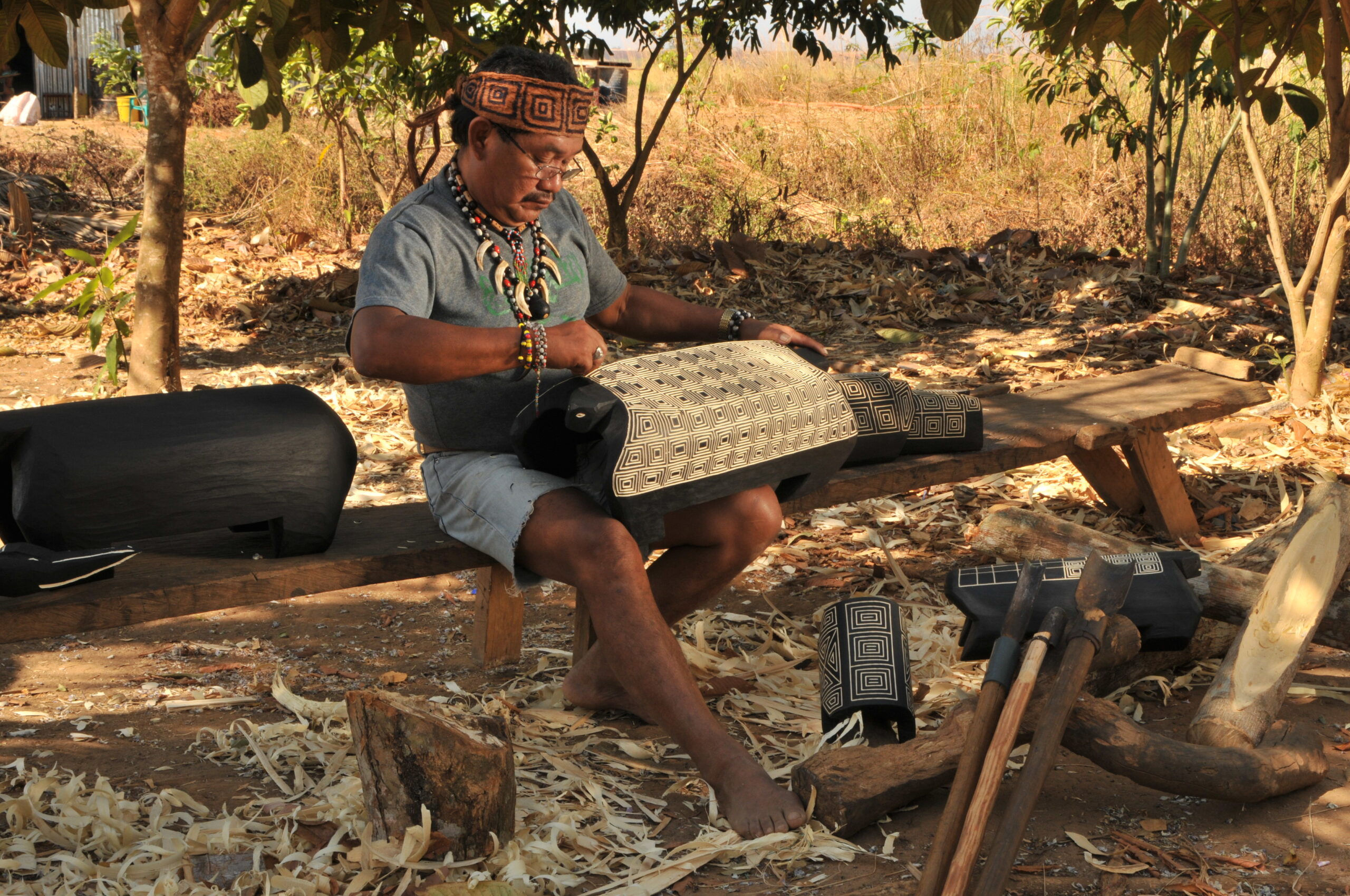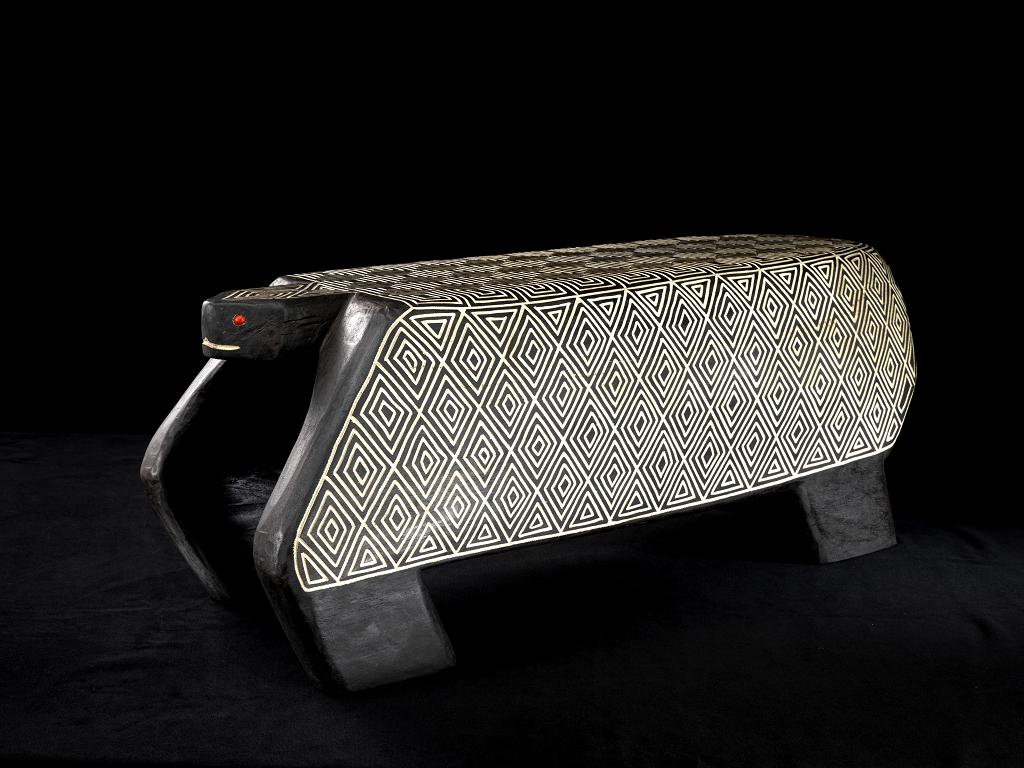Description
Colombia es un país multiétnico y pluricultural con más de 87 etnias indígenas que forman parte de la cultura nacional y son portadoras de tradiciones, legados y saberes desde tiempos inmemorables. Entre ellas está la etnia Sikuani, establecida en resguardos creados por el Gobierno Nacional en 1975 a través del INCORA, uno de estos resguardo es el de Corocito, ubicado en Puerto Gaitán, Meta, al lado del río, entre las matas del monte para evitar las inundaciones. Allí habita Ramito Moreno, indígena sikuani cuyo nombre es cristiano aunque el chamán le dio otro nombre que guarda como un gran secreto frente a personas extrañas.
Ramiro es pescador y agricultor como sus antepasados; se reconoce a sí mismo como “el mayor artístia del resguardo” por su conocimiento y habilidad para la talla en madera y porque ha enseñado esta labor a sus hijos y a más de 180 indígenas sikuani que están transmitiendo a otros lo que han aprendido. “No tengo estudios pero tengo conocimiento”, afirma Ramiro con la serenidad y la seguridad de quien sabe y valora lo que hace y con la autoridad que le reconoce su comodidad como “capitán mayor” y como “orientado”.
Desde su infancia “miraba a la gente para ver si podía rescatar algo de sus costumbres y tradiciones”. A los 36 años salió del resguardo y viajó a Puerto Ayacucho para trabajar y conocer otras etnias. A los 48 años decidió elaborar de nuevo los bancos que usaban sus padres y sus abuelos. Félix le contó que cada banco tiene su propia historia y se elabora según el uso que se le quiere dar. “La talla es muy respetuosa o muy servicial”. Unos sirven para conversar, otros para hacer trueques, para niñas y señoras o para múltiples usos. Los talladores de bancos acuden al chamán para investigar cómo deben tallarlos. Puede ser una talla de tortuga, de serpiente o de cualquier otro animal de acuerdo con el sueño del chamán. “En el sueño, el sabedor ve eso como algo natural; encuentra una figura y define cuál puede servir para cada ocasión… Los diseños geométricos viven en la imaginación de los chamanes y se llaman ‘llaves del cielo’, que abren y muestran el camino que se ha de seguir.” Ciertos dibujos y figuras no se aplican a los objetos que se comercializan porque solo corresponden a los chamanes y la comunidad. Para la talla se usa madera de “machaco, chaparro de agua y saladillo” que se encuentra en el resguardo. Cada tres años se hace una resiembra para que la madera no falte.
Actualmente están mejorando los diseños y la calidad de los artículos tallados en madera para comercializarlos en todo el país. Ramiro desea arreglar su casa y abrir un almacén en el resguardo para que lleguen turistas y compradores de muchas partes. Allí podrán visitarlo y él seguirá vistiendo sus atuendos con sus collares tradicionales para mantener viva su identidad y su cultura con gran orgullo.
English
Sikuani Bench
Colombia is a multi-ethnic and pluricultural country with more than 87 indigenous ethnic groups that form part of the national culture and are bearers of traditions, legacies and knowledge since time immemorial. Among them is the Sikuani ethnic group, established in reservations created by the National Government in 1975 through INCORA, one of these reservations is Corocito, located in Puerto Gaitán, Meta, next to the river, among the bushes of the forest to avoid flooding. Ramito Moreno lives there, an indigenous Sikuani whose name is Christian, although the shaman gave him another name which he keeps as a great secret from outsiders.
Ramiro is a fisherman and farmer like his ancestors. He recognises himself as “the greatest artist of the reserve” because of his knowledge and skill in wood carving and because he has taught this work to his children and to more than 180 Indigenous Sikuani who are passing on to others what they have learned. “I have no studies but I have knowledge,” Ramiro says with the serenity and confidence of someone who knows and values what he does, and with the authority that comes from his comfort as a “senior captain” and as a “guide”.
Since his childhood, he “looked at the people to see if he could rescue something of their customs and traditions”. At the age of 36, he left the reserve and travelled to Puerto Ayacucho to work and get to know other ethnic groups. At the age of 48, he decided to remake the benches used by his parents and grandparents. Félix told him that each bench has its own history and is made according to its intended use. “The carving is very helpful. Some are used for conversation, others for bartering, for girls and ladies or for multiple uses. The bench carvers go to the shaman to find out how they should carve them. It may be a carving of a turtle, a snake or any other animal according to the shaman’s dream. “In the dream, the wise man sees this as something natural; he finds a figure and defines which one can be used for which occasion. ….. The geometrical designs live in the imagination of the shamans and are called “keys of heaven”, which open and show the path to be followed”. Certain designs and figures are not applied to objects that are traded because they belong only to the shamans and the community. Wood from “machaco”, “chaparro de agua” and “saladillo” found in the reserve is used for carving. Every three years the wood is replanted so that there is no shortage of wood.
They are currently improving the designs and quality of the wood carved articles in order to market them throughout the country. Ramiro wants to fix up his house and open a store in the reserve to attract tourists and buyers from all over the country. There they will be able to visit him and he will continue to wear his attire with his traditional necklaces to keep his identity and culture alive with great pride.




Reviews
There are no reviews yet.